Braces – Rochester, NY | Webster, NY
Straighter Smiles Guaranteed
 When it comes to fixing crooked, crowded, or gapped teeth, nothing is better for the job than traditional braces in Rochester. Strong, reliable, and durable, Dr. Drabik is able to correct both minor and major orthodontic concerns with relative ease using this tried-and-true teeth-straightening solution. If you’re interested in learning more about this treatment for you or your child, we invite you to schedule a friendly and informative consultation with Dr. Drabik today. If you’d like to learn a bit more before reaching out, then read on!
When it comes to fixing crooked, crowded, or gapped teeth, nothing is better for the job than traditional braces in Rochester. Strong, reliable, and durable, Dr. Drabik is able to correct both minor and major orthodontic concerns with relative ease using this tried-and-true teeth-straightening solution. If you’re interested in learning more about this treatment for you or your child, we invite you to schedule a friendly and informative consultation with Dr. Drabik today. If you’d like to learn a bit more before reaching out, then read on!
Why Choose Drabik Orthodontics for Traditional Orthodontics?
- Orthodontist with more than 20 years of experience
- Passionate about providing premier care & outstanding customer service
- Options available for patients of all ages
How Do Traditional Metal Braces Work?
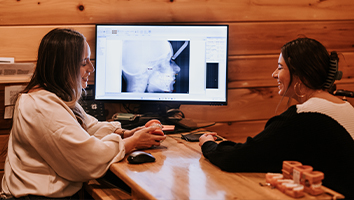
Traditional metal braces have been around for quite some time. They are very effective for correcting minor to serious orthodontic concerns. Metal brackets are attached to the surface of the tooth and a small elastic (ligature) holds the orthodontic wires in place. Ligatures come in a variety of colors or can blend in with the brackets to make them less noticeable. The wires apply constant, even pressure to the teeth, helping you achieve your straighter smile over a period of time.
What Orthodontic Issues Can Braces Fix?
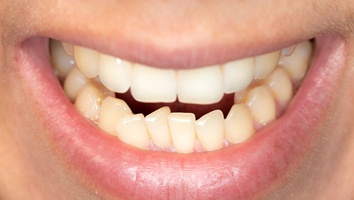
Braces in Webster are extremely reliable when it comes to addressing a wide range of orthodontic issues, including:
- Bite Misalignment – Does your bite not come together evenly? Unfortunately, this concern isn’t just a cosmetic one, it can also negatively affect your oral and overall health. Don’t worry – braces can correct overbites, underbites, crossbites, and more.
- Crooked & Crowded Teeth – Do your teeth overlap? This can create unique crevices for food particles and debris to hide in, increasing your chances of cavities. Not to mention the toll it can take on your self-confidence. The good news is that braces can gently guide your teeth into their properly aligned positions, benefiting both the look and function of your smile.
- Gapped Teeth – Are you unhappy with spaces between your teeth? This is yet another orthodontic issue that braces can correct!
Caring For Your Braces
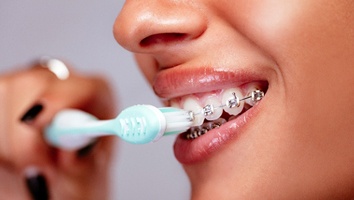
Braces are comprised of materials that are both high in quality and extremely durable. With that said, they do still require some maintenance. Therefore, you should:
- Brush for two full minutes after each meal, making sure to clean the top and bottom of each bracket.
- Wear a mouthguard when you play sports.
- Prioritize your check-in appointments with your orthodontist.
- Avoid the foods on your dietary restrictions, like whole apples, hard candies, and gum.
Phase One Pediatric Orthodontics
We recommend every child should have a complete orthodontic screening by the time they are seven years old. This allows Dr. Drabik to diagnose and treat any early developmental issues. In doing so, Dr. Drabik can use more conservative treatments to achieve significant and long-lasting results. With Phase One Pediatric Orthodontics, we can usually decrease a child’s need for more involved orthodontic treatment in the future.
Learn More About Phase One Pediatric Orthodontics
Clear/Ceramic Braces

Many adults avoid straightening their teeth because they do not want noticeable metal braces. This is completely understandable. Thankfully, there is an option that offers the reliability of braces with a cosmetic twist—clear/ceramic braces.
The brackets are made of a see-through or tooth-colored material. The wires are also tooth-colored. The clear bracket and white wire combination make this form of treatment blend seamlessly into your smile. This treatment is perfect for adults who want to maintain their professional appearance. It is great for image-conscious teens too. The other advantage to today’s ceramic brackets is they do not stain. They stay clear!
Learn More About Clear/Ceramic Braces
Self-Ligating Braces

With traditional metal braces, the teeth are moved using a slight amount of pressure applied by a wire. The wire is held in the brackets by a small elastic (ligature) on each tooth. While this method is extremely effective, the friction caused by the ligature against the wire can actually slow down tooth movement.
Self-ligating brackets are designed to address this increase in friction. The wire is held in place using a small metal latch on each bracket. This allows teeth to slide more easily along the wire. Thus, creating faster tooth movement. It also allows patients to have their braces adjusted less frequently. This can lead to significant time savings over the course of their treatment.
Lingual Braces
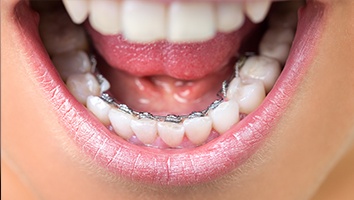
Imagine getting braces that absolutely no one could see. Sound impossible? That is exactly how lingual braces work. They use the same dependable method as traditional braces—metal brackets and wires—but instead of being placed on the front of the teeth, they are placed on the back, preventing them from being seen.
This makes treatment extremely discreet without changing its effectiveness. It is perfect for both adults and older children. The other advantage of lingual braces is they are efficient because they are not removable. Clear aligner treatment requires compliance.
propel® and Propel Accelerated Orthodontics
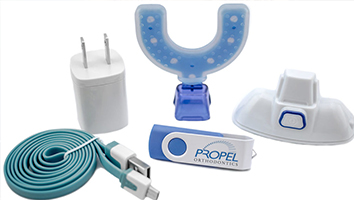
One of the most common questions at our orthodontic office is: “how long is my treatment going to take?”; The answer is different from patient to patient depending on their needs. However, we offer cutting edge technology called propel and Propel. propel and Propel utilize vibration technology to make treatment more comfortable and shorter in duration.
propel and Propel are small handheld devices that patients bite on once a day for 20 minutes. Micropulses are delivered to the teeth enhancing bone remodeling and thus making teeth move faster. These devices have been shown to shorten treatment time by as much as 40%.
Understanding the Cost of Traditional Braces
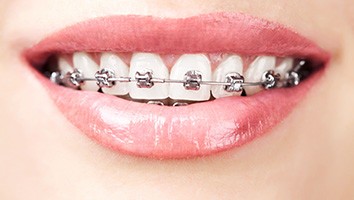
Now that you know more about how braces might benefit you, it’s natural to wonder how much you’ll pay for your treatment. The cost can vary from person to person because it depends on your unique circumstances. Before we can provide an estimate, you must have a consultation with Dr. Drabik to ensure that you’re a good candidate. Then, we’ll walk you through pricing details for your approval before moving forward.
Continue reading below to learn more about the different factors that influence the total amount due, and feel free to contact us for more information.
Factors That Affect the Cost of Traditional Braces
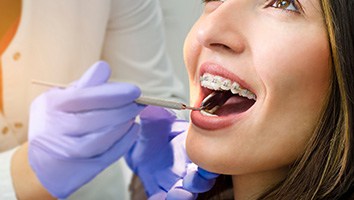
Several different things affect the total cost of your orthodontics, including:
- The length of your treatment. Braces require ongoing follow-up appointments and adjustments.
- The severity of your condition. Overly crooked or crowded teeth usually require longer to shift back into place, increasing the price.
- Teenagers have more flexible jawbones than fully-grown adults. As a result, they may not need to have braces for as long, so there are fewer expenditures.
- Additional appliances. Accessories and other supplies, such as space maintainers, palatal expanders, headgear, retainers, and elastics, are all charged.
- Treatment compliance. Following Dr. Drabik’s instructions ensures that you stay on track with your treatment timeline so you don’t accrue additional costs.
Professional Braces vs. "DIY" Braces: Which Costs More?
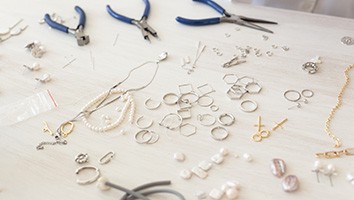
If you’re overly worried about the cost of braces, you might feel tempted to try to straighten your teeth on your own at home. In recent years, there has been a growing trend of people attempting to use household items to realign their grins. Attempts have been made to adapt fishing lines, earring backs, superglue, rubber bands, paper clips, and even hair elastics to push their teeth into their proper places.
While this may seem like a less expensive method, you could end up paying more in the long run. Many household products aren’t safe for oral use. You might injure your mouth or ingest something toxic that makes you sick. Furthermore, you might shift your teeth in the wrong direction and will have to pay for a longer orthodontic treatment to reverse the damage.
Does Dental Insurance Cover Braces

Some dental insurance policies include roughly 50% coverage for orthodontic treatments, especially if they’ve been deemed necessary for your dental health. However, not all plans are the same, so it’s worth checking whether your insurance provider will contribute anything. You also need to know whether there are additional restrictions that apply. For example, you might have a waiting period that must pass before benefits kick in.
If you’re unsure what your insurance covers, please don’t hesitate to let us know. Our friendly office staff is familiar with many policies and can help you maximize your individual benefits.
Options for Making Braces Affordable

We know that not everyone carries dental insurance, and we don’t want your wallet to keep you from having the healthy, beautiful smile that you deserve. Other options can help you make your braces more affordable, such as:
- Flexible financing. We’ve partnered with Lending Club so that if your application is approved, you can break down your total invoice into more manageable installments.
- Family discounts. Once one person in your household gets braces, every additional family member receives $200 off their full treatment fee.
- Free consultation. If you’re unsure whether traditional orthodontics are right for you, you can schedule a consultation appointment free of charge.
Traditional Braces FAQs
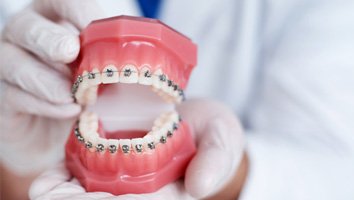
Most people know someone who has gotten braces, and as a result, people getting them for the first time are often equipped with a lot of secondhand knowledge. However, not everything you hear about traditional braces is true, and some of it may not be true for modern braces, even if it was at one point.
We’ll be happy to clear up any misconceptions you have at your orthodontic consultation, as well as tell you more about what to expect from getting braces in Gates. Until then, however, here are some answers you may be looking for regarding traditional metal braces.
Am I Too Old to Get Braces?
Some people associate braces with adolescence, but the truth is that people of any age can get and benefit from orthodontics. However, it’s also the case that adults’ teeth are more firmly embedded in the jaw than those of younger people, so straightening them may take a little bit more time.
It’s also worth noting that many dental plans partially cover braces for kids, but rarely do the same for adults. As a result, you may have to pay more of the fees out-of-pocket.
What Can You Not Eat with Traditional Braces?
As you may know, it’s a good idea to stay away from certain foods for the time that you’re wearing braces. This is typically in the interest of preventing orthodontic emergencies, like snapped wires.
For the first few days you have your braces, it’s recommended that you go on a soft food diet. After that, here are a few foods you may want to stay away from to protect your braces:
- Candy, especially sticky, hard, or chewy candy
- Nuts that can get lodged in your braces
- Popcorn (and popcorn kernels)
- Chips
- Hard, crusty bread or taco shells
You should also try and avoid chewing on anything that isn’t food, like pens, pencils, or your nails.
Why Do My Teeth Feel Loose with Braces?
One of the first things patients tend to notice when they get braces is that their teeth have this strange “floaty” feeling. This is actually completely normal—in fact, the point of wearing spacers and gradually tightening your braces is to produce exactly this effect.
When your teeth are moved, the ligaments that ordinarily hold your teeth in place in your mouth have to stretch. This can make your teeth feel a little bit loose. Don’t worry though, there isn’t any risk of your teeth falling out. The tree that bends is the last to break—the fact that your ligaments are stretching means that your teeth are still being held in place. The floating feeling is a good sign.
What Happens After You Get Your Braces Off?
When you first get your braces off, your teeth will still be pretty movable, and they’ll naturally want to return to their original positions. This is why it’s usually important to wear a retainer in order to hold your new smile in place.
Most retainers are removable, but some are permanently affixed to your teeth in order to hold them in position. You may have to wear removable retainers all day when you first get them, but after a while, you’ll be able to switch to only wearing them at night.
Does It Hurt to Get Braces?
It’s a common myth that it hurts to get braces; however, modern advancements have made the treatment incredibly comfortable and surprisingly subtle, and once a patient is used to wearing braces, they hardly even notice they’re there! It is true that many patients experience an adjustment period while wearing braces, and after getting braces and following adjustment appointments, it is normal to feel some sensitivity. However, outright pain should never occur – if it does, it’s a sign that something is wrong, and you should give our office a call.
How Long Will I Need to Wear My Braces?
Everyone’s orthodontic journey is different; some are born with teeth that only need a small amount of realignment, while others suffer from complex bite issues or malocclusion that require a little more work and patience. In any case, your overall treatment timeline can also vary based on your compliance with treatment, your oral hygiene, and other factors. Most patients wear their braces anywhere from 18 to 24 months, but it might fall shorter or longer than this range. When you’re here for your consultation, as we review your treatment plan, we should be able to provide you with a close estimate for how long you’ll be with your braces.
Can I Chew Gum with Traditional Braces?
It’s true that chewing gum does have certain oral health benefits – mainly, it is capable of increasing your mouth’s flow of saliva, which is your body’s first line of defense against cavity-causing bacteria. Preventing cavities during your orthodontic journey is fairly important, but ultimately, chewing gum isn’t worth it. It’s easy for gum to become stuck in your braces, causing your wires to bend or making your teeth shift in unexpected directions. We recommend avoiding chewing gum while you have braces to help keep things right on track.
What Should I Do If I Break My Braces?
Braces have come a long way in the last few years, and they tend to be more durable than ever before. In rare cases, though, it’s possible for a bracket to break, a wire to snap, or some other type of damage to occur. Whether your damage seems major or minor, it isn’t going to be something that you’re equipped to repair yourself – and trying to do so might cause further harm to your braces or your smile. As soon as you’ve noticed that your braces are broken, don’t hesitate to give our office a call and let us know what happened. We will let you know what your next steps are and when/if you need to come in.



